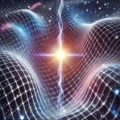Gravitational Redshift via Orbiting Hydrogen Maser (1976)
Standard Interpretation
Purpose:
To test the Einstein gravitational redshift prediction, which states that a clock in a higher gravitational potential (farther from Earth) ticks faster than a clock in a lower potential.
Method:
- A highly stable hydrogen maser clock was launched aboard a suborbital rocket to a height of ~10,000 km.
- Its frequency was compared to a matched reference maser on Earth using a two-way radio link.
- Corrections were applied for Doppler shifts, isolating the redshift caused purely by gravitational potential difference.
Result:
![Rendered by QuickLaTeX.com \[ \frac{\Delta f}{f} = \frac{\Delta U}{c^2} = \frac{GM}{c^2} \left( \frac{1}{R_\text{Earth}} - \frac{1}{R_\text{rocket}} \right) \]](https://gravityz0.com/wp-content/ql-cache/quicklatex.com-d4eeb1608da0d5976d7c5ba09bff633a_l3.png)
where: Deltaf = ractional frequency shift of the clock, DeltaU = gravitational potential difference between ground and orbit, G = gravitational constant, M = mass of Earth, c = speed of light in vacuum, REarth, Rrocket = radial distances from the Earth’s center to each clock.
Clocks at higher potential (higher altitude) run faster than those deeper in gravity well.
Conventional Conclusion:
Results matched the GR prediction to ~70 parts per million, confirming that gravitational potential alters the passage of time.
Charge Admittance (CA) Reinterpretation
CA Principles Relevant Here:
- Energy in Mass Alters Lattice Response – Earth’s mass-energy distorts the temporal properties of the vacuum lattice.
- Temporal Impedance Governs Oscillator Rates – The rate of charge oscillation (e.g., maser transitions) is governed by the local impedance environment of the charge lattice.
- Lattice Depth Affects Clock Rate – At lower potential (closer to mass-energy), the lattice presents higher dynamic impedance, slowing oscillation rates.
CA interpretation:
- The hydrogen maser interacts with the local charge lattice, which exhibits impedance characteristics modulated by nearby energy (i.e., Earth’s gravitational field).
- In deeper lattice potential (lower altitude), the vacuum’s temporal response function is altered, reducing the oscillation frequency of the bound states in the maser.
- At higher altitudes, the lattice impedance is lower, allowing faster oscillation—not due to geometry, but due to vacuum material response.
How CA Challenges or Extends GR View
- Challenges:
- Replaces space-time curvature with variations in vacuum impedance.
- Describes time dilation as material reaction of a structured vacuum, not a geometric warping of coordinate time.
- Validates/Extends:
- Confirms the same redshift magnitude as GR.
- Provides a mechanism for how mass-energy couples to time via local field admittance.
- Suggests new ways to test redshift behavior by tuning or perturbing lattice properties (e.g., electromagnetic environment, Casimir configurations).
Implications for Further Research
- Experimental Predictions:
- Laboratory setups with modified vacuum structure (e.g., near Casimir cavities or high-field regions) may show measurable time dilation analogs.
- High-frequency resonant systems (optical clocks) near artificial energy-density configurations might exhibit CA-specific timing anomalies.
- Observational Consequences:
- Offers an alternative explanation for GPS satellite time adjustments via local lattice calibration, not coordinate frame correction.
- Suggests possible asymmetries in redshift behavior for systems where the lattice is affected by more than just gravitational energy (e.g., in strong EM fields or structured vacua).
